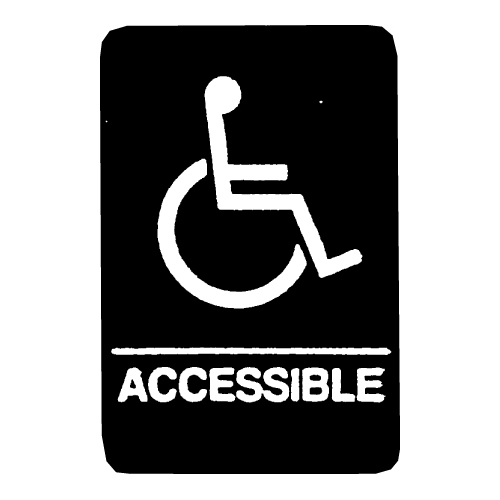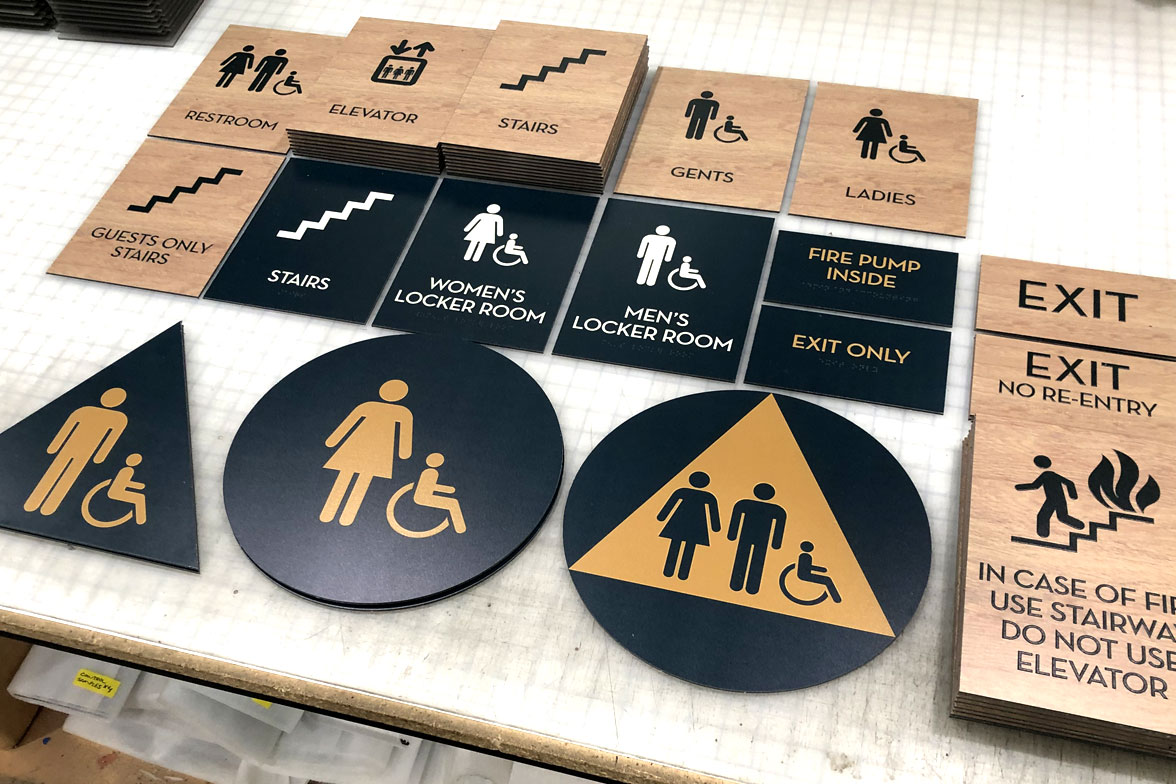A Comprehensive Guide to Selecting the Right ADA Signs
A Comprehensive Guide to Selecting the Right ADA Signs
Blog Article
Checking Out the Secret Attributes of ADA Indicators for Boosted Access
In the world of access, ADA indications act as quiet yet powerful allies, guaranteeing that spaces are comprehensive and accessible for individuals with impairments. By integrating Braille and tactile elements, these indicators break barriers for the aesthetically damaged, while high-contrast color pattern and legible typefaces satisfy varied visual needs. Moreover, their critical positioning is not approximate however rather a computed effort to help with seamless navigating. Yet, beyond these features exists a deeper story about the evolution of inclusivity and the recurring commitment to developing equitable rooms. What extra could these indications signify in our pursuit of global availability?
Significance of ADA Conformity
Making certain compliance with the Americans with Disabilities Act (ADA) is important for cultivating inclusivity and equivalent access in public spaces and offices. The ADA, established in 1990, mandates that all public facilities, employers, and transportation services suit individuals with disabilities, ensuring they delight in the very same rights and chances as others. Compliance with ADA criteria not just meets legal responsibilities however likewise boosts a company's reputation by demonstrating its dedication to variety and inclusivity.
One of the vital elements of ADA compliance is the implementation of available signage. ADA indicators are made to make sure that individuals with specials needs can conveniently browse via rooms and structures.
Additionally, adhering to ADA laws can alleviate the danger of possible penalties and legal effects. Organizations that stop working to comply with ADA standards may deal with penalties or legal actions, which can be both destructive and financially difficult to their public image. Hence, ADA compliance is important to fostering an equitable setting for everybody.
Braille and Tactile Elements
The unification of Braille and tactile aspects into ADA signage embodies the principles of availability and inclusivity. It is commonly positioned below the matching text on signs to make certain that individuals can access the details without aesthetic aid.
Responsive components expand past Braille and include increased icons and personalities. These elements are created to be discernible by touch, permitting people to identify area numbers, restrooms, leaves, and other vital areas. The ADA establishes specific standards pertaining to the dimension, spacing, and placement of these responsive elements to optimize readability and guarantee consistency throughout different environments.

High-Contrast Color Design
High-contrast color pattern play an essential role in enhancing the presence and readability of ADA signage for people with visual problems. These schemes are vital as they optimize the difference in light reflectance in between text and background, making certain that indications are easily discernible, also from a distance. The Americans with Disabilities Act (ADA) mandates the use of details color contrasts to fit those with limited vision, making it a critical aspect of compliance.
The efficiency of high-contrast colors hinges on their capacity to stand apart in numerous lighting problems, including poorly lit settings and locations with glare. Normally, dark text on a light background or light message on a dark history is employed to accomplish optimum contrast. For instance, black text on a yellow or white background offers a raw aesthetic difference that assists in quick acknowledgment and understanding.

Legible Fonts and Text Size
When thinking about the style of ADA signs, the choice of readable typefaces and ideal message dimension can not be overemphasized. These aspects are critical for ensuring that signs come to individuals with visual problems. The Americans with Disabilities Act (ADA) mandates that fonts need to be sans-serif and not italic, oblique, script, highly ornamental, or of unusual type. These requirements aid guarantee that check my blog the message is quickly understandable from a distance and that the characters are appreciable to varied audiences.
According to ADA guidelines, the minimal text height should be 5/8 inch, and it needs to enhance proportionally with watching distance. Uniformity see here in text size adds to a cohesive visual experience, aiding individuals in browsing atmospheres efficiently.
In addition, spacing between lines and letters is essential to legibility. Adequate spacing protects against characters from appearing crowded, boosting readability. By adhering to these criteria, designers can significantly enhance accessibility, guaranteeing that signs serves its desired purpose for all individuals, no matter of their visual abilities.
Reliable Positioning Techniques
Strategic placement of ADA signs is essential for making the most of ease of access and making sure conformity with legal standards. ADA standards specify that indications must be installed at a height between 48 to 60 inches from the ground to guarantee they are within the line of sight for both standing and seated individuals.
In addition, indications must be positioned adjacent to the lock side of doors to permit very easy identification prior to entry. Uniformity in sign positioning throughout a center improves predictability, reducing complication and enhancing general customer experience.

Final Thought
ADA signs play a crucial duty in promoting accessibility by integrating attributes that address the needs of people with handicaps. Including Braille and tactile aspects makes certain vital details comes to the visually damaged, while high-contrast color pattern and readable sans-serif fonts boost exposure throughout have a peek here numerous lights problems. Reliable positioning methods, such as ideal mounting elevations and calculated places, additionally assist in navigating. These elements collectively foster an inclusive environment, underscoring the significance of ADA compliance in making sure equivalent gain access to for all.
In the realm of ease of access, ADA signs offer as quiet yet effective allies, guaranteeing that spaces are inclusive and accessible for individuals with impairments. The ADA, enacted in 1990, mandates that all public centers, companies, and transportation solutions suit individuals with impairments, ensuring they delight in the very same legal rights and chances as others. ADA Signs. ADA signs are designed to ensure that people with impairments can conveniently navigate through buildings and rooms. ADA guidelines specify that indications ought to be mounted at an elevation between 48 to 60 inches from the ground to guarantee they are within the line of sight for both standing and seated people.ADA signs play a vital duty in promoting access by integrating attributes that attend to the demands of people with impairments
Report this page